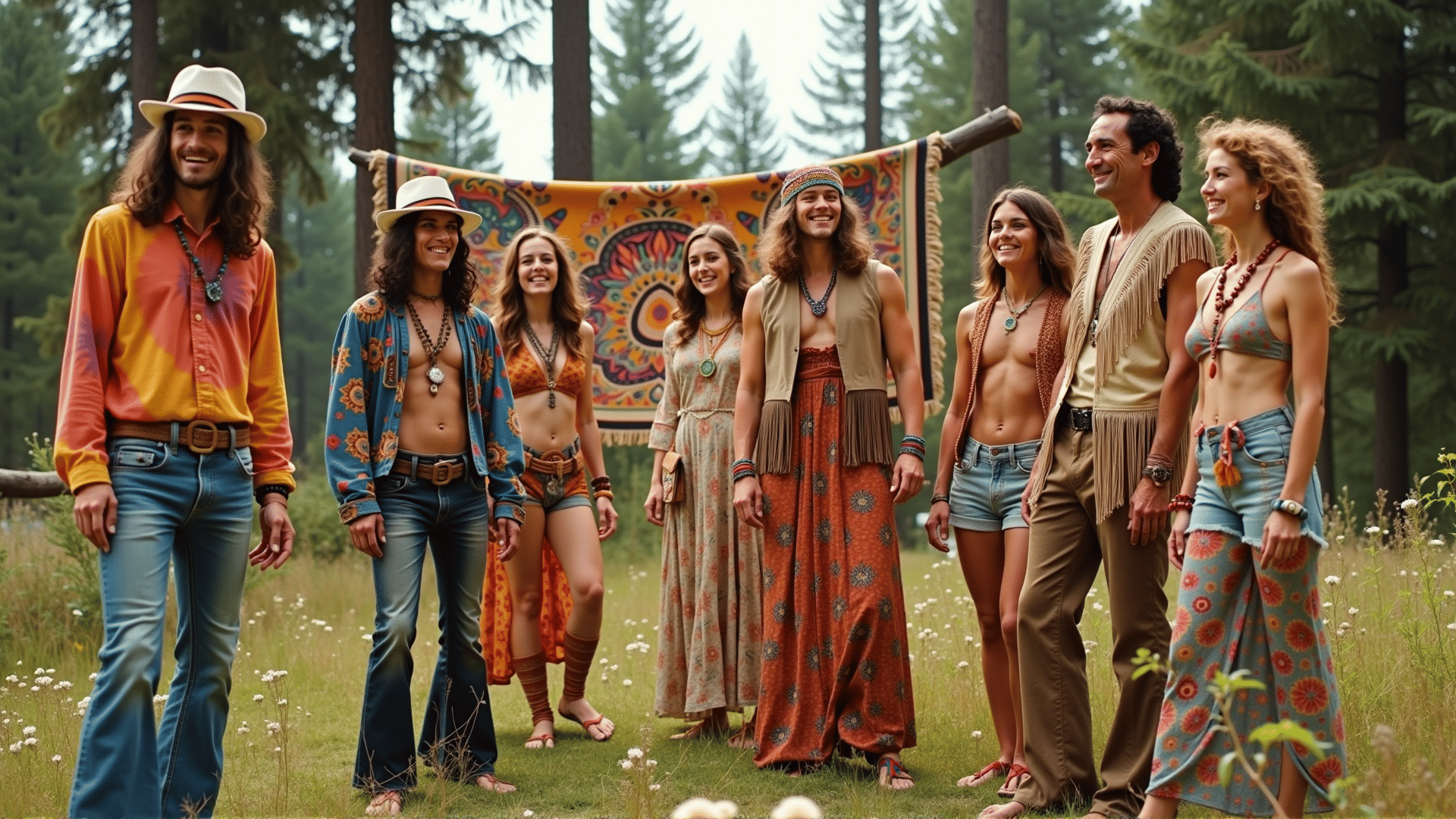The 1960s Hippie Movement was a cultural phenomenon that reshaped societal norms, advocating for peace, love, and harmony, while creating an enduring impact on the aesthetic preferences of the era. The movement's style was a vibrant tapestry woven from the threads of diverse global influences, resulting in an eclectic and expressive narrative.
Central to this narrative was a rejection of mainstream norms, favoring individuality and a deep connection to nature. Embodying these principles, participants adorned themselves in attire that celebrated creativity and comfort. This era saw a notable resurgence in the use of natural materials, with hemp, cotton, and wool being highly favored for their organic qualities.
The global influences on this movement were profound. From the fringes of American culture, enthusiasts drew inspiration from India, Mexico, Africa, and beyond. Indian elements like paisley patterns, tie-dye, and vivid saris infused the scene with vibrant colors and intricate designs. The allure of Mexican peasant blouses, known for their embroidery and bright hues, also played a significant role. African motifs and textiles contributed rich patterns and bold statements, adding cultural diversity to an already diverse tapestry.
Jewelry and accessories held symbolic importance, often reflecting spiritual or philosophical beliefs. Beaded necklaces, homemade bracelets, and peace symbol pendants became ubiquitous. Footwear was natural and simple, with many opting for sandals or going barefoot to maintain a grounded connection with the earth.
The hairstyles of the era further reflected the movement's ideals. Long, flowing locks were a common choice, embodying the freedom from social constraints and a return to a more natural state. Flowers worn in the hair became powerful symbols of peace and alignment with the natural world.
The Hippie Movement’s influence extended beyond the confines of personal expression, leaving a lasting imprint on culture and society. Its embrace of non-Western traditions opened the doors to greater cultural appreciation and fusion, fostering a more inclusive and experimental approach to personal style.
As the movement evolved, its cultural footprint spread, influencing subsequent decades with its spirit of liberation and innovation. It championed a way of living that encouraged authenticity, environmentalism, and a holistic appreciation of human diversity, values still relevant in today’s pursuit of a more equitable and harmonious world.
